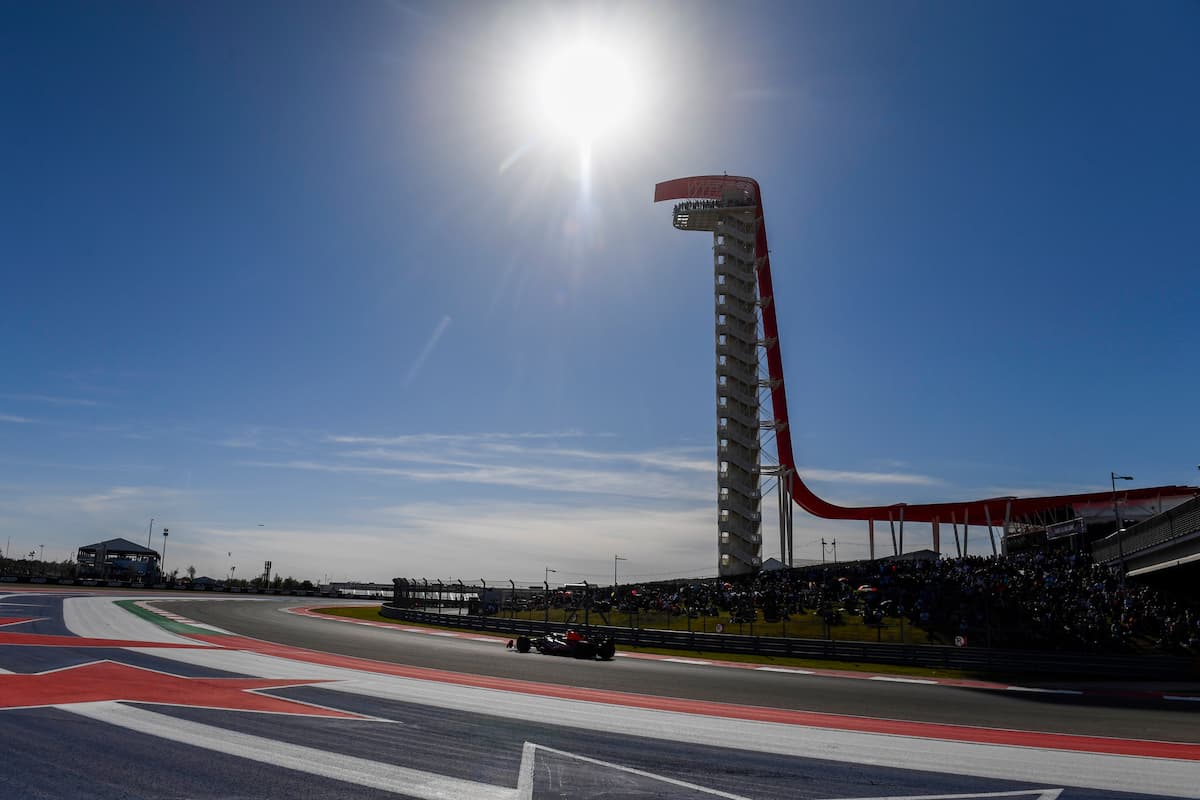
After a three-week absence, Formula 1 returns to the rev of engines and pulsating drama around the Circuit of the Americas for Round 19 of the Formula 1 season. So get yourself as the weekend draws ever closer for the United States Grand Prix.
Located in the second-largest state in the United States, Formula 1 flies northeast across the Philippine Sea and the North Pacific Ocean to the cowboy state of Texas. For the fourth time this season, Formula 1 returns to the Sprint format this weekend.
History of the United States Grand Prix
Formula 1 introduced the Circuit of the Americas (COTA) back in 2012 as the penultimate race of the season. The renowned architect Hermann Tilke designed the COTA circuit, which included elevated changes, sharp corners, and long straights. It was a test of grit and tolerance for the drivers coping with immense gravitational force.
After a five-year absence, when the pinnacle of motorsport’s last race in America was at the Indianapolis Motor Speedway in 2007, Formula 1 has since pushed the envelope in a bid to showcase the ever-growing popularity of motorsport within America.
The inaugural race around COTA in 2012, won by McLaren driver Lewis Hamilton, was the stepping stone to showcasing the COTA’s modern amenities and fan-friendly features, setting a high standard for future races. Since then, it has paved the way for Formula 1 to expand its racing culture to the United States.
For the second straight season, A circuit is one of three in America that Formula 1 traverses throughout the season. The first is Miami, the second is Texas, and the final track is America’s crown jewel city of Las Vegas.
Track Evolution of the Circuit of the Americas
This project was scheduled for completion in June 2012, and construction began on December 31, 2010. During the construction of the grandstands and the pit lane, it wasn’t long until August 3, 2012, when the first layer of asphalt was laid, marking a significant milestone in the creation of the Circuit of the Americas.
Just over a week later, on August 14, work began on the final layer, which was completed by September 21. The excitement culminated on October 21, when the track officially opened.
Legendary racer Mario Andretti took to the circuit for a ceremonial first lap in a classic John Player Special Lotus-Cosworth, or his Lotus 79 for short, bringing the new venue to life and setting the stage for its future as a premier motorsport destination.
Since its inception in 2012, the Circuit of the Americas has not witnessed any changes to its layout or drastic safety changes.
Track Layout
The Circuit of the Americas ignites America action once again around this 5.5-kilometre circuit, which has 20 turns, 12 to the left and eight to the right, forming an anti-clockwise track. For a race that will consist of 308 kilometres of on-track action, the drivers will have to endure 56 laps of gruelling twists and turns.
As we moved away from the shocking four DRS Zones in Singapore, the number of DRS zones for the Circuit of the Americas has halved. The first is located after the Turn 11 hairpin, heading down to Turn 12. The final DRS Zone is located just before the Start/Finish line, coming out of Turn 20.
Iconic Features
One of the most striking features of the COTA circuit is the elevation change. For the drivers, it is a 133-foot climb heading up to Turn 1. Heading down the hill passing Turn 2, Turn 3’s steep left-hander is often highlighted for its complexity, which takes inspiration from Silverstone’s sequence of corners, such as Maggots, Becketts, and Chapel, also known as the ‘esses’.
But what sticks out from the centre of the circuit is the 251-foot observation tower. It offers a panoramic view of the entire Circuit of the Americas circuit, which has become a symbol of the Grand Prix itself, offering fans an elevated experience.
Memorable Races around the Circuit of the Americas
Starting with the inaugural race at the Circuit of the Americas in 2012 marked a historic return for Formula 1 to the U.S. after a five-year hiatus. Lewis Hamilton and Sebastian Vettel, both at the height of their powers, delivered a thrilling duel for victory. Hamilton, driving for McLaren, executed a crucial overtake on Vettel on Lap 42, seizing the lead and claiming the win. Fernando Alonso, finishing third, kept his championship ambitions alive as the season headed into its showdown.
Moving to 2015, the United States Grand Prix was a dramatic affair, defined by heavy rain during qualifying and challenging wet conditions early in the race. Starting from second on the grid, Lewis Hamilton engaged in a fierce battle with his Mercedes teammate Nico Rosberg and Red Bull’s Daniel Ricciardo. The tricky weather made for unpredictable racing, but a critical mistake from Rosberg late in the race handed Hamilton the opportunity to take the lead. Hamilton capitalised, claiming victory and sealing his third World Championship with three races remaining in the season.
The 2018 U.S. Grand Prix was memorable as Kimi Räikkönen claimed his first victory in over five years, ultimately his last in Formula 1. Starting from second on the grid, Räikkönen jumped on Lewis Hamilton at the start and led much of the race. Despite intense pressure from Hamilton and a late charge from Max Verstappen, the Finnish veteran held his nerve to secure an emotional win. Hamilton’s third-place finish meant his championship coronation would be delayed, adding to the tension as the season neared its conclusion.
The 2021 U.S. Grand Prix was pivotal in the intense title fight between Max Verstappen and Lewis Hamilton. Verstappen started on pole but lost the lead to Hamilton at the start, setting the stage for a strategic battle between the two. In a brilliant tactical move by Red Bull, Verstappen reclaimed the advantage with a perfectly timed undercut during the pit stops. Despite relentless pressure from Hamilton in the final laps, Verstappen managed to fend him off, crossing the line just 1.333 seconds ahead and securing a crucial victory in their closely fought championship duel.
Live Timings (BST – British Standard Time)
Friday (18th October)
6:00 pm – United States Grand Prix Practice One – (Session begins at 6:30 pm)
9:30 pm – United States Grand Prix Sprint Qualifying – (Session begins 10:30 pm)
Saturday (19th October)
6:00 pm – United States Grand Prix Sprint Race – (Session begins at 7:00 pm)
10:00 pm – United States Grand Prix Qualifying – (Session begins at 11:00 pm)
Sunday (20th October)
6:30 pm – United States Grand Prix – (Session begins at 8:00 pm)
If you would like to learn more news about the world of Formula 1? Then why not check out “Will We See Mick Schumacher Join KICK in 2025?” or “Mercedes Looking to Replace George Russell for 2026?”

